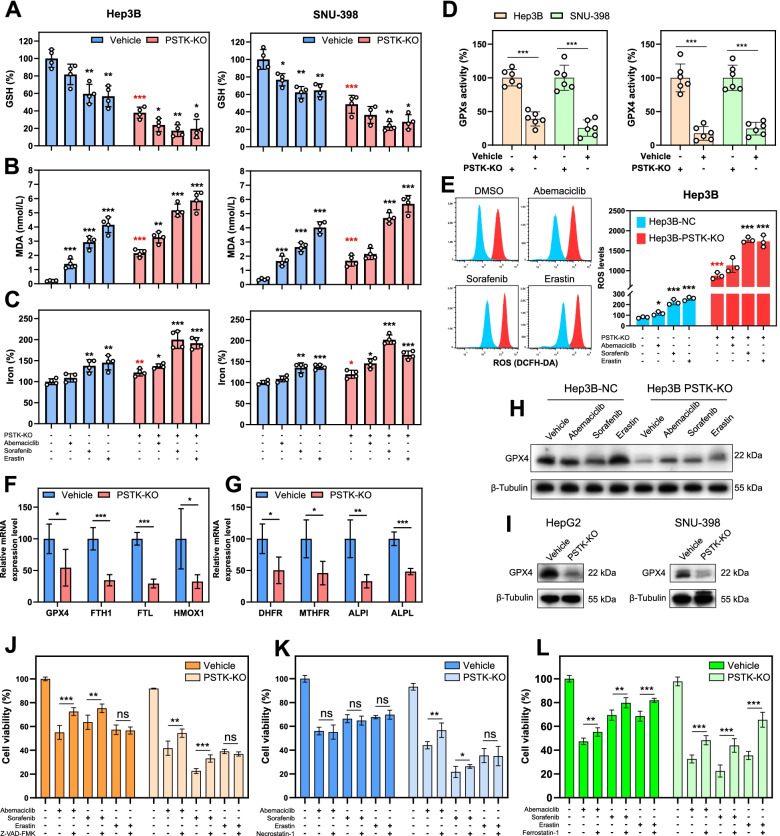Fig. 6.
PSTK maintains GPX4 activity to protect against ferroptotic induction. A-C PSTK-knockout HCC cells were treated with Abemaciclib (5 μM), Sorafenib (5 μM), or Erastin (10 μM) for 24 h, after which levels of GSH, MDA, and iron were assessed (n=4). Comparisons were made between cells treated with inhibitors and vehicle-treated cells (black), or between PSTK-KO vs. PSTK-NC cells (red) D GPXs and GPX4 activities in PSTK-KO and control cells were assessed (n=6). E Knockout of PSTK promoted increases in ROS levels at baseline and in response to therapeutic treatment (n=3). Comparisons were made between cells treated with inhibitors and vehicle-treated cells (black), or between PSTK-KO vs. PSTK-NC cells (red). F GPX4, FTH1, FTL, and HMOX1 mRNA levels were measured via qPCR (n=4). G DHFR, MTHFR, ALPI, and ALPL mRNA levels were measured via qPCR (n=4). H-I Immunoblotting revealed significant GPX4 downregulation in PSTK-knockout HCC cells. J-L Hep3B-NC and Hep3B-PSTK-KO cells were treated with targeted therapies (Abemaciclib, 5 μM; Sorafenib, 5 μM; Erastin, 10 μM) together with or without inhibitors (Z-VAD-FMK, 10 μM; Necrostatin-1, 10 μM; Ferrostatin-1, 10 μM) for 48 h, and the inhibition of growth was assessed via CCK-8 assay (n=5). *p<0.05; **p<0.01; ***p<0.001; Student’s t-test

